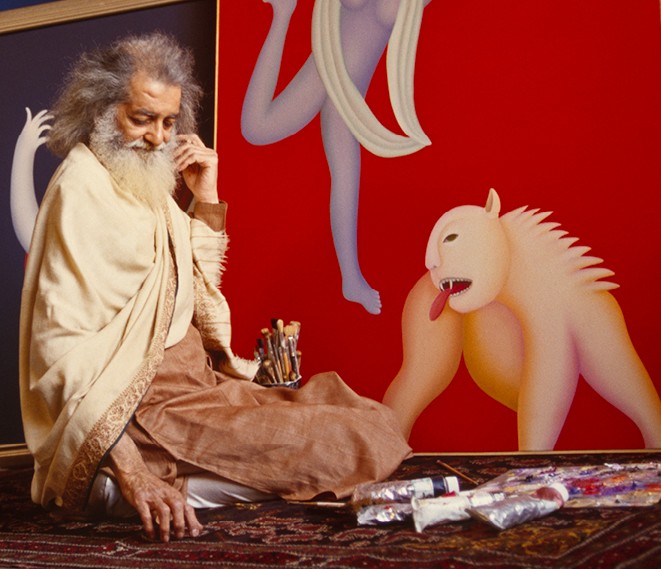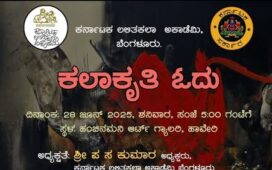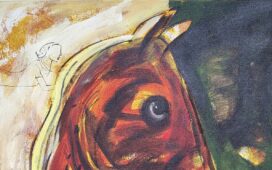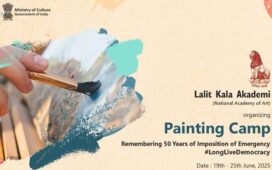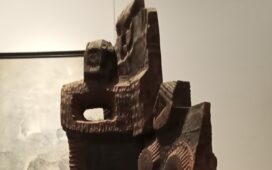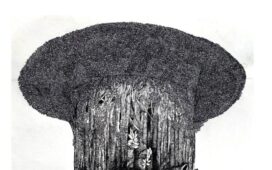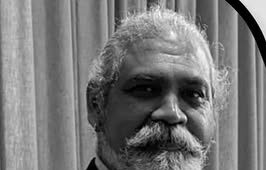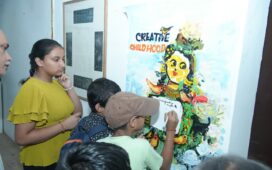Sadar Naman – A tribute to Manjit Bawa on his death anniversary – 29 December 2008
Artists across the centuries sought to bring the beauty they saw around them and the emotions deep in their souls onto the canvas and other media. Mirroring such experiences and the gesture of expressing such expressions is infinite and exciting that lasts longer with much more value. The elements of life and nature represents its delicate beauty with their own description, representation, and necessities for care. Each subject has its own association with beauty, inspiration and love, making it an ideal gift for us. This creates some good interest in the common man by invoking some strong senses, emotions, and feelings. The artist just depicts the awe of such subjects, kicks off some divine celebration with firing of some great imagination.
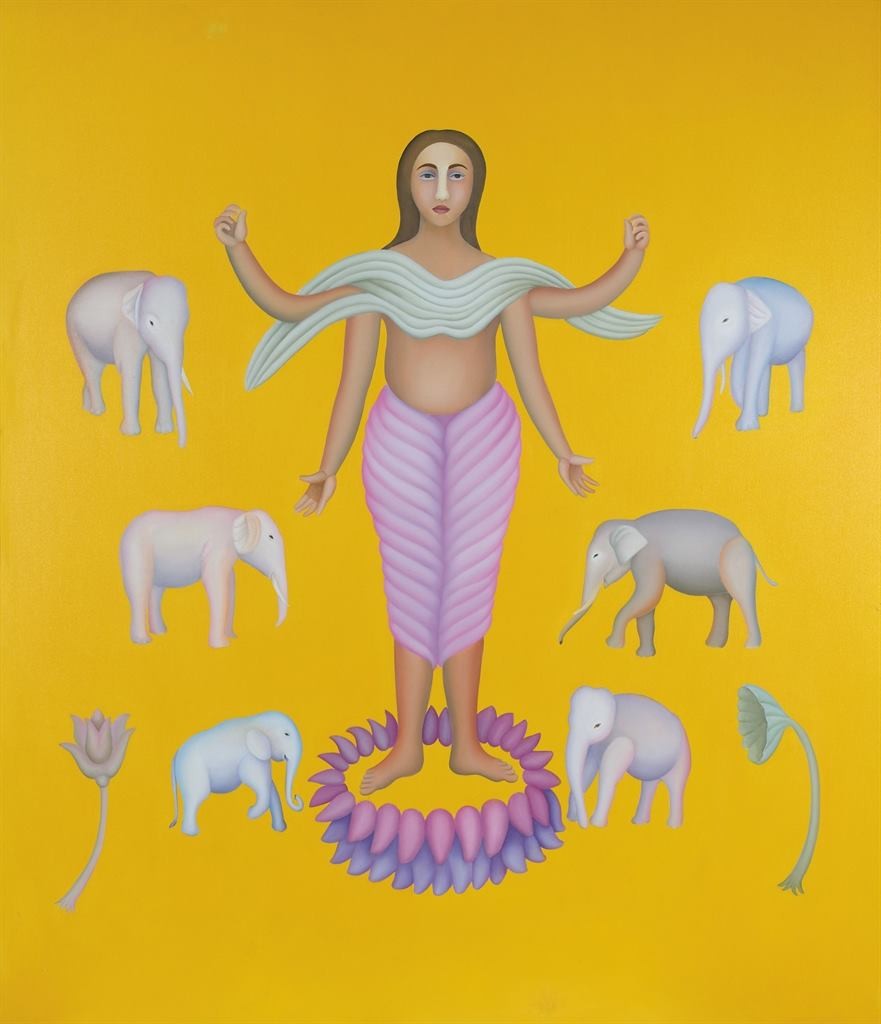
Manjit Bawa is one of the great Indian Master artists who lived between 1941 and 2008. He once said – “There has to be a certain freshness and newness in one’s art, otherwise it’s pointless to pursue it. To be different means doing something you have never done before.” Born in a small Punjabi town of Dhuri in 1941, Manjit Bawa wasn’t exactly encouraged to be an artist. He said that his mother would try to dissuade him, saying art was not a means of livelihood. But Manjit’s spiritual leanings dispelled his fears. He had no qualms. He believed that God would provide him with food and he would earn the rest.
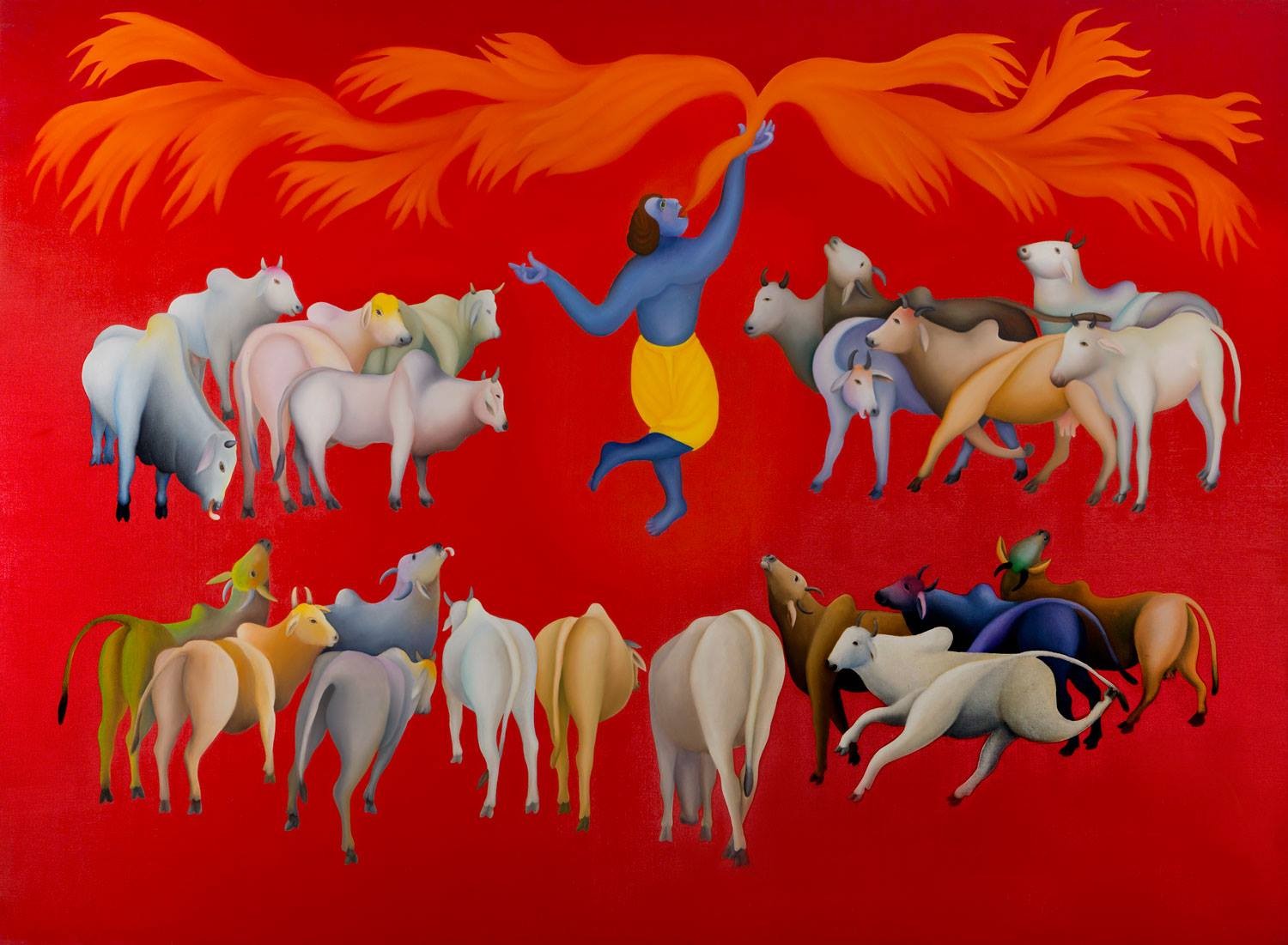
Manjit Bawa was not only known for his vibrant paintings but also for his love of spirituality, and particularly of Sufi philosophy. He said, “I find a wealth of wisdom in the scriptures. Sufi philosophy has taught me that man and man, man and animals, can co-exist”. Manjit’s paintings are an output of his inspirations and influences about life and living in both physical and emotional space that touched him since childhood. His compositions are a visual poetry that narrates the quiet and beautiful subjects and people thus bringing a great muse to the viewer. There is a fantastic degree of mystical beauty in his atmospheric works.
Manjit’s visual composition depicts life and spirituality in all its unbound glory and plays a huge role in his paintings and thought process. His presentation of human, animals and the emotions involved with them is a powerful symbol in his work giving a personal, deep descriptions of his visual opinion of nature and its beautiful and powerful qualities. Inspired by an exhibition of Michelangelo’s sketches, the artist returned to drawing later in his career, after many years of painting. His subjects include figures of the deities Kali and Shiva, animals, nature, flute motifs, and the idea of co-existence between man and animal. Bawa learned to play the flute from a maestro, which became a large part of the scenes in his paintings. He often depicted Krishna with a flute, where his followers were dogs and not cows, as was traditional.
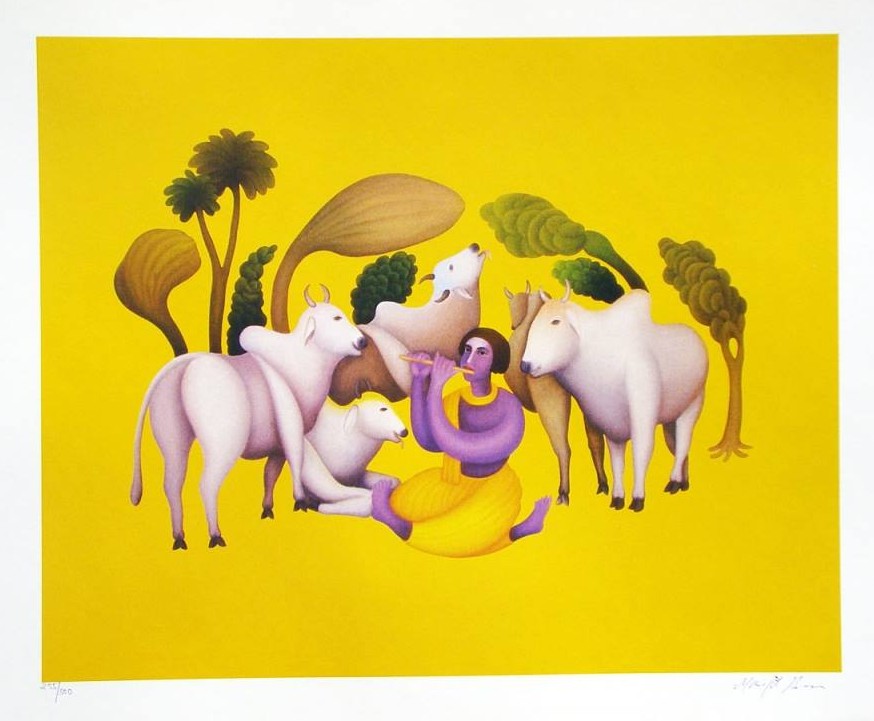
Manjit Bawa celebrated the power of imagination and explored the importance of imagination, the creative impulse and the artistic viewpoint as well. He celebrated this vision through his work while exploring the theme of aesthetic beauty, not just of nature but of the figures in it as well. Traversing the length between realistic and stylised, Manjit’s works explored the threshold between illusion and reality, between waking and dreaming.
Bawa suffered a stroke in 2005, and, after three years in a coma, he died on this day, December 29, 2008. His paintings, featuring forms and distinguishable colour, are celebrated throughout the world today.
Authored by Vasanth Rao
Artist, Writer & Curator
Sydney, Australia.
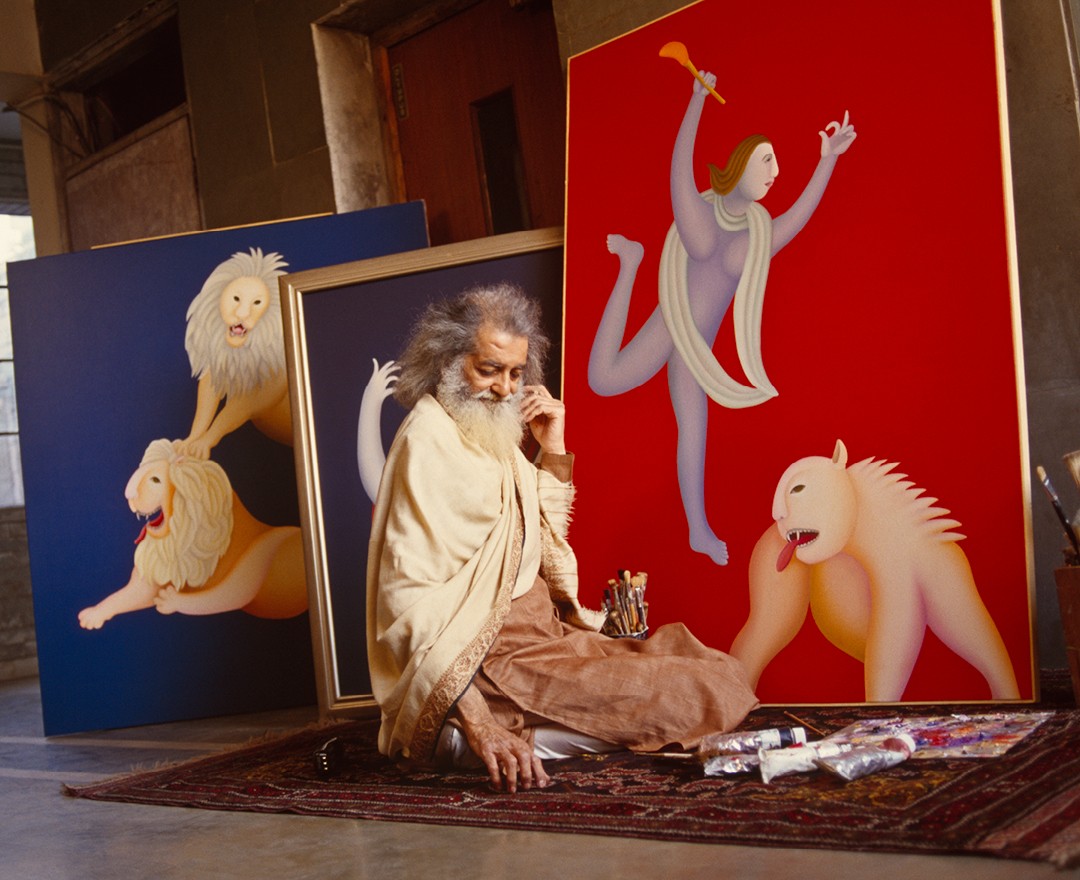
ಸದರ್ ನಮನ್ – ಮಂಜಿತ್ ಬಾವಾ ಅವರ ಮರಣ ವಾರ್ಷಿಕೋತ್ಸವದಂದು ಅವರಿಗೆ ಗೌರವ – 29 ಡಿಸೆಂಬರ್ 2008 ಶತಮಾನಗಳಾದ್ಯಂತ ಕಲಾವಿದರು ತಮ್ಮ ಸುತ್ತಲಿನ ಸೌಂದರ್ಯವನ್ನು ಮತ್ತು ಅವರ ಆತ್ಮದಲ್ಲಿನ ಆಳವಾದ ಭಾವನೆಗಳನ್ನು ಕ್ಯಾನ್ವಾಸ್ ಮತ್ತು ಇತರ ಮಾಧ್ಯಮಗಳ ಮೇಲೆ ತರಲು ಪ್ರಯತ್ನಿಸಿದರು. ಅಂತಹ ಅನುಭವಗಳನ್ನು ಪ್ರತಿಬಿಂಬಿಸುವುದು ಮತ್ತು ಅಂತಹ ಅಭಿವ್ಯಕ್ತಿಗಳನ್ನು ವ್ಯಕ್ತಪಡಿಸುವ ಗೆಸ್ಚರ್ ಅನಂತ ಮತ್ತು ಉತ್ತೇಜಕವಾಗಿದ್ದು ಅದು ಹೆಚ್ಚು ಮೌಲ್ಯದೊಂದಿಗೆ ಹೆಚ್ಚು ಕಾಲ ಉಳಿಯುತ್ತದೆ. ಜೀವನ ಮತ್ತು ಪ್ರಕೃತಿಯ ಅಂಶಗಳು ಅದರ ಸೂಕ್ಷ್ಮ ಸೌಂದರ್ಯವನ್ನು ತಮ್ಮದೇ ಆದ ವಿವರಣೆ, ಪ್ರಾತಿನಿಧ್ಯ ಮತ್ತು ಆರೈಕೆಯ ಅಗತ್ಯತೆಗಳೊಂದಿಗೆ ಪ್ರತಿನಿಧಿಸುತ್ತವೆ. ಪ್ರತಿಯೊಂದು ವಿಷಯವು ಸೌಂದರ್ಯ, ಸ್ಫೂರ್ತಿ ಮತ್ತು ಪ್ರೀತಿಯೊಂದಿಗೆ ತನ್ನದೇ ಆದ ಸಂಬಂಧವನ್ನು ಹೊಂದಿದೆ, ಇದು ನಮಗೆ ಆದರ್ಶ ಕೊಡುಗೆಯಾಗಿದೆ.
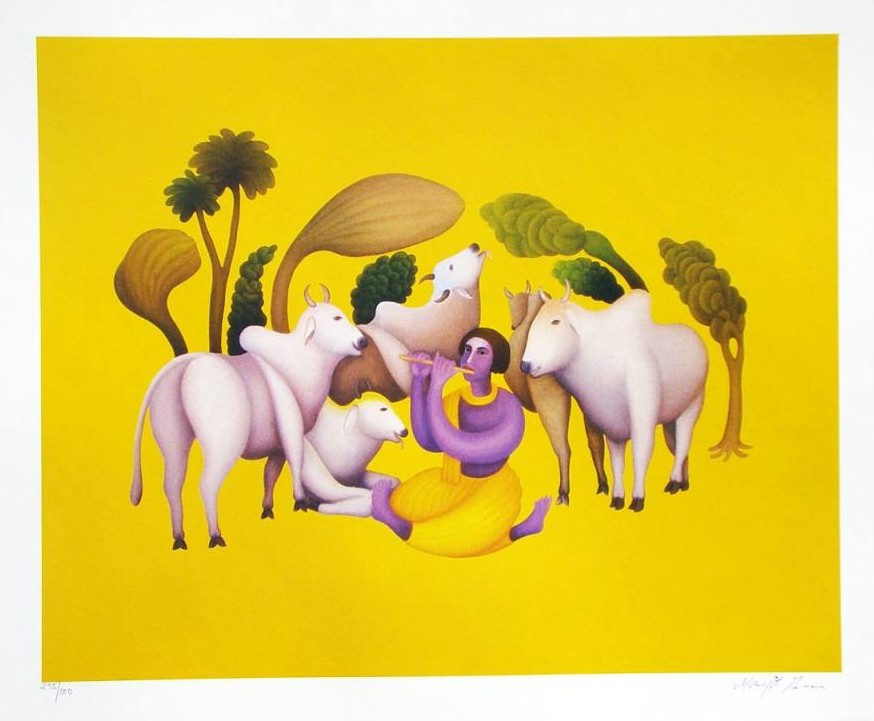
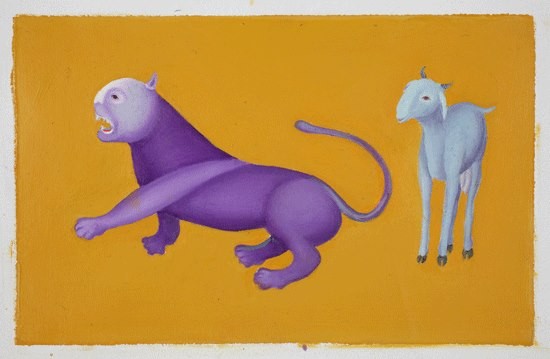
ಇದು ಕೆಲವು ಬಲವಾದ ಇಂದರಿಯಗಳು, ಭಾವನೆಗಳ ಮತ್ತು ಭಾವನೆಗಳನ್ನು ಪ್ರಚೋದಿಸುವ ಮೂಲಕ ಸಾಮಾನ್ಯ ವ್ಯಕ್ತಿಯಲ್ಲಿ ಕೆಲವು ಉತ್ತಮ ಆಸಕ್ತಿಯನ್ನು ಸೃಷ್ಟಿಸುತ್ತದೆ. ಕಲಾವಿದನು ಅಂತಹ ವಿಷಯಗಳ ವಿಸ್ಮಯವನ್ನು ಚಿತ್ರಿಸುತ್ತಾನೆ, ಕೆಲವು ಮಹಾನ್ ಕಲ್ಪನೆಯ ಗುಂಡು ಹಾರಿಸುವುದರೊಂದಿಗೆ ಕೆಲವು ದೈವಿಕ ಆಚರಣೆಯನ್ನು ಪ್ರಾರಂಭಿಸುತ್ತಾನೆ. ಮಂಜಿತ್ ಬಾವಾ 1941 ಮತ್ತು 2008 ರ ನಡುವೆ ಬದುಕಿದ ಮಹಾನ್ ಭಾರತೀಯ ಮಾಸ್ಟರ್ ಕಲಾವಿದರಲ್ಲಿ ಒಬ್ಬರು. ಅವರು ಒಮ್ಮೆ ಹೇಳಿದರು – “ಒಂದು ನಿಶ್ಚಿತವಾಗಿರಬೇಕು. ಒಬ್ಬರ ಕಲೆಯಲ್ಲಿ ತಾಜಾತನ ಮತ್ತು ಹೊಸತನ, ಇಲ್ಲದಿದ್ದರೆ ಅದನ್ನು ಅನುಸರಿಸುವುದು ಅರ್ಥಹೀನವಾಗಿದೆ ಎಂದರೆ ನೀವು ಹಿಂದೆಂದೂ ಮಾಡದ ಕೆಲಸವನ್ನು ಮಾಡುವುದು. 1941 ರಲ್ಲಿ ಸಣ್ಣ ಪಂಜಾಬಿ ಪಟ್ಟಣವಾದ ಧುರಿಯಲ್ಲಿ ಜನಿಸಿದ ಮಂಜಿತ್ ಬಾವಾ ಅವರು ಕಲಾವಿದರಾಗಲು ನಿಖರವಾಗಿ ಪ್ರೋತ್ಸಾಹಿಸಲಿಲ್ಲ. ಕಲೆಯು ಜೀವನೋಪಾಯದ ಸಾಧನವಲ್ಲ ಎಂದು ಹೇಳುವ ಮೂಲಕ ಅವರನ್ನು ತಡೆಯಲು ತಾಯಿ ಪ್ರಯತ್ನಿಸುತ್ತಾರೆ ಎಂದು ಹೇಳಿದರು. ಆದರೆ ಮಂಜಿತ್ ಅವರ ಆಧ್ಯಾತ್ಮಿಕ ಒಲವು ಅವರ ಭಯವನ್ನು ಹೋಗಲಾಡಿಸಿತು. ಅವನಿಗೆ ಯಾವುದೇ ಸಂಕೋಚ ಇರಲಿಲ್ಲ. ದೇವರು ತನಗೆ ಆಹಾರವನ್ನು ಒದಗಿಸುತ್ತಾನೆ ಮತ್ತು ಉಳಿದದ್ದನ್ನು ಅವನು ಸಂಪಾದಿಸುತ್ತಾನೆ ಎಂದು ಅವನು ನಂಬಿದನು.
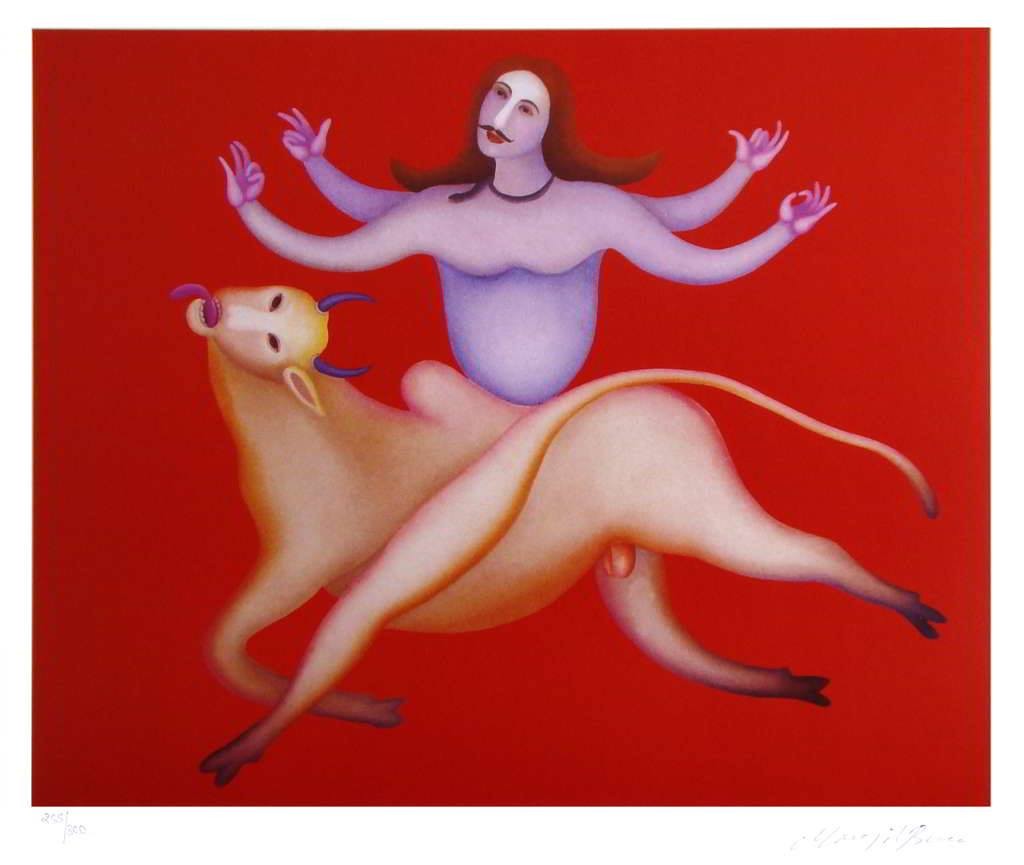
ಮಂಜಿತ್ ಬಾವಾ ಅವರು ತಮ್ಮ ರೋಮಾಂಚಕ ವರ್ಣಚಿತ್ರಗಳಿಗೆ ಮಾತ್ರವಲ್ಲದೆ ಆಧ್ಯಾತ್ಮಿಕತೆಯ ಮೇಲಿನ ಪ್ರೀತಿಗೆ ಮತ್ತು ವಿಶೇಷವಾಗಿ ಸೂಫಿ ತತ್ವಶಾಸ್ತ್ರಕ್ಕೆ ಹೆಸರುವಾಸಿಯಾಗಿದ್ದರು. ಅವರು ಹೇಳಿದರು, “ನಾನು ಧರ್ಮಗ್ರಂಥಗಳಲ್ಲಿ ಬುದ್ಧಿವಂತಿಕೆಯ ಸಂಪತ್ತನ್ನು ಕಾಣುತ್ತೇನೆ. ಸೂಫಿ ತತ್ವವು ಮನುಷ್ಯ ಮತ್ತು ಮನುಷ್ಯ, ಮನುಷ್ಯ ಮತ್ತು ಪ್ರಾಣಿಗಳು ಸಹಬಾಳ್ವೆ ಮಾಡಬಹುದು ಎಂದು ನನಗೆ ಕಲಿಸಿದೆ”. ಮಂಜಿತ್ ಅವರ ವರ್ಣಚಿತ್ರಗಳು ಬಾಲ್ಯದಿಂದಲೂ ಅವರನ್ನು ಸ್ಪರ್ಶಿಸಿದ ಜೀವನ ಮತ್ತು ದೈಹಿಕ ಮತ್ತು ಭಾವನಾತ್ಮಕ ಜಾಗದಲ್ಲಿ ವಾಸಿಸುವ ಅವರ ಸ್ಫೂರ್ತಿಗಳು ಮತ್ತು ಪ್ರಭಾವಗಳ ಔಟ್ಪುಟ್ಗಳಾಗಿವೆ. ಅವರ ಸಂಯೋಜನೆಗಳು ಸ್ತಬ್ಧ ಮತ್ತು ಸುಂದರವಾದ ವಿಷಯಗಳನ್ನು ಮತ್ತು ಜನರನ್ನು ನಿರೂಪಿಸುವ ದೃಶ್ಯ ಕಾವ್ಯವಾಗಿದ್ದು ವೀಕ್ಷಕರಿಗೆ ಉತ್ತಮವಾದ ವಸ್ತುವನ್ನು ತರುತ್ತವೆ. ಅವರ ವಾತಾರಣದ ಕೃತಿಗಳ್ಲಿ ಅತೀಂದ್ರಿಯ ಸೌಂದರ್ಯದ ಅದ್ಭುತ ಮಟ್ಟವಿದೆ. ಮಂಜಿತ್ ಅವರ ದೃಶ್ಯ ಸಂಯೋಜನೆಯು ಜೀವನ ಮತ್ತು ಆಧ್ಯಾತ್ಮಿಕತೆಯನ್ನು ಅದರ ಎಲ್ಲಾ ಮಿತಿಯಿಲ್ಲದ ವೈಭವದಲ್ಲಿ ಚಿತ್ರಿಸುತ್ತದೆ ಮತ್ತು ಅವರ ವರ್ಣಚಿತ್ರಗಳು ಮತ್ತು ಚಿಂತನೆಯ ಪ್ರಕ್ರಿಯೆಯಲ್ಲಿ ದೊಡ್ಡ ಪಾತ್ರವನ್ನು ವಹಿಸುತ್ತದೆ. ಮಾನವ, ಪ್ರಾಣಿಗಳು ಮತ್ತು ಅವರೊಂದಿಗೆ ಒಳಗೊಂಡಿರುವ ಭಾವನೆಗಳ ಅವರ ಪ್ರಸ್ತುತಿಯು ಅವರ ಕೆಲಸದಲ್ಲಿ ಪ್ರಬಲ ಸಂಕೇತವಾಗಿದೆ, ಇದು ಪ್ರಕೃತಿಯ ಅವರ ದೃಶ್ಯ ಅಭಿಪ್ರಾಯ ಮತ್ತು ಅದರ ಸುಂದರವಾದ ಮತ್ತು ಶಕ್ತಿಯುತ ಗುಣಗಳ ವೈಯಕ್ತಿಕ, ಆಳವಾದ ವಿವರಣೆಯನ್ನು ನೀಡುತ್ತದೆ. ಮೈಕೆಲ್ಯಾಂಜೆಲೊನ ರೇಖಾಚಿತ್ರಗಳ ಪ್ರದರ್ಶನದಿಂದ ಸ್ಫೂರ್ತಿ ಪಡೆದ ಕಲಾವಿದ ತನ್ನ ವೃತ್ತಿಜೀವನದ ನಂತರ, ಹಲವು ವರ್ಷಗಳ ಚಿತ್ರಕಲೆಯ ನಂತರ ಚಿತ್ರಕಲೆಗೆ ಮರಳಿದನು. ಅವನ ವಿಷಯಗಳಲ್ಲಿ ಕಾಳಿ ಮತ್ತು ಶಿವ ದೇವತೆಗಳ ಆಕೃತಿಗಳು, ಪ್ರಾಣಿಗಳು, ಪ್ರಕೃತಿ, ಕೊಳಲಿನ ಲಕ್ಷಣಗಳು ಮತ್ತು ಮನುಷ್ಯ ಮತ್ತು ಪ್ರಾಣಿಗಳ ನಡುವಿನ ಸಹಬಾಳ್ವೆಯ ಕಲ್ಪನೆ ಸೇರಿವೆ. ಬಾವಾ ಅವರು ಮೇಸ್ಟ್ರೋನಿಂದ ಕೊಳಲು ನುಡಿಸಲು ಕಲಿತರು, ಅದು ಅವರ ವರ್ಣಚಿತ್ರಗಳಲ್ಲಿನ ದೃಶ್ಯಗಳ ದೊಡ್ಡ ಭಾಗವಾಯಿತು. ಅವನು ಆಗಾಗ್ಗೆ ಕೃಷ್ಣನನ್ನು ಕೊಳಲಿನೊಂದಿಗೆ ಚಿತ್ರಿಸುತ್ತಿದ್ದನು, ಅಲ್ಲಿ ಅವನ ಅನುಯಾಯಿಗಳು ನಾಯಿಗಳು ಮತ್ತು ಹಸುಗಳಲ್ಲ, ಸಾಂಪ್ರದಾಯಿಕವಾಗಿ.
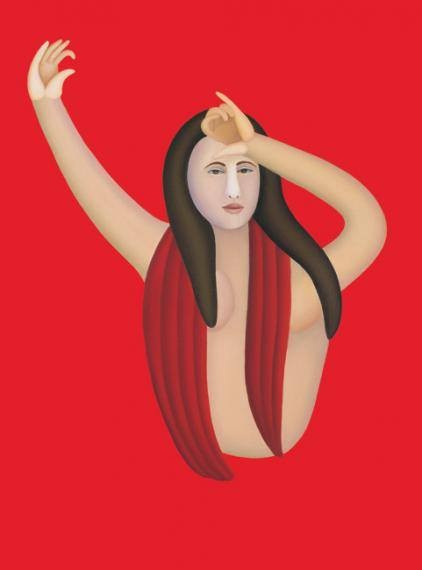
ಮಂಜಿತ್ ಬಾವಾ ಅವರು ಕಲ್ಪನೆಯ ಶಕ್ತಿಯನ್ನು ಕೊಂಡಾಡಿದರು ಮತ್ತು ಕಲ್ಪನೆಯ ಪ್ರಾಮುಖ್ಯತೆ, ಸೃಜನಶೀಲ ಪ್ರಚೋದನೆ ಮತ್ತು ಕಲಾತ್ಮಕ ದೃಷ್ಟಿಕೋನವನ್ನು ಅನ್ವೇಷಿಸಿದರು. ಸೌಂದರ್ಯದ ಸೌಂದರ್ಯದ ವಿಷಯವನ್ನು ಅನ್ವೇಷಿಸುವಾಗ ಅವರು ತಮ್ಮ ಕೆಲಸದ ಮೂಲಕ ಈ ದೃಷ್ಟಿಯನ್ನು ಆಚರಿಸಿದರು, ಕೇವಲ ಪ್ರಕೃತಿಯಷ್ಟೇ ಅಲ್ಲ, ಅದರಲ್ಲಿರುವ ವ್ಯಕ್ತಿಗಳೂ ಸಹ. ವಾಸ್ತವಿಕ ಮತ್ತು ಶೈಲೀಕೃತ ನಡುವಿನ ಉದ್ದವನ್ನು ಹಾದುಹೋಗುವ ಮಂಜಿತ್ ಅವರ ಕೃತಿಗಳು ಭ್ರಮೆ ಮತ್ತು ವಾಸ್ತವದ ನಡುವಿನ ಮಿತಿಯನ್ನು, ಎಚ್ಚರ ಮತ್ತು ಕನಸುಗಳ ನಡುವಿನ ಮಿತಿಯನ್ನು ಪರಿಶೋಧಿಸುತ್ತವೆ. ಬಾವಾ 2005 ರಲ್ಲಿ ಪಾರ್ಶ್ವವಾಯುವಿಗೆ ಒಳಗಾದರು ಮತ್ತು ಮೂರು ವರ್ಷಗಳ ನಂತರ ಕೋಮಾದಲ್ಲಿ ಅವರು ಈ ದಿನ, ಡಿಸೆಂಬರ್ 29, 2008 ರಂದು ನಿಧನರಾದರು. ಅವರ ವರ್ಣಚಿತ್ರಗಳು, ರೂಪಗಳು ಮತ್ತು ವಿಶಿಷ್ಟವಾದ ಬಣ್ಣವನ್ನು ಒಳಗೊಂಡಿವೆ, ಇಂದು ಪ್ರಪಂಚದಾದ್ಯಂತ ಆಚರಿಸಲಾಗುತ್ತದೆ.
— ವಸಂತ ರಾವ್, ಲೇಖಕ,
–Authored by Vasanth Rao,Artist, Writer & Curator,Sydney, Australia.



